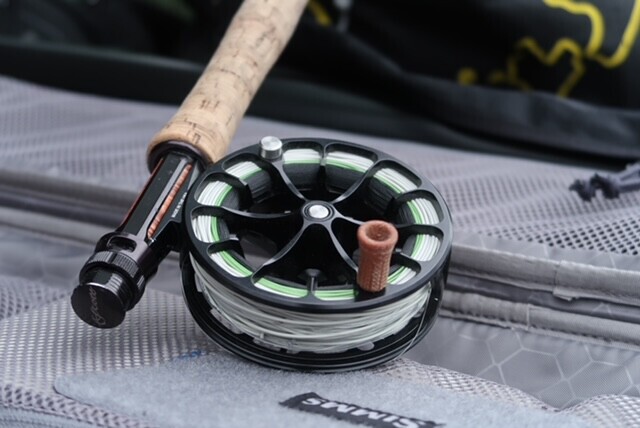When choosing a fly line for New Zealand conditions, its important to consider the type of fishing you plan to do, and the waters you are likely to be fishing. For instance, the line you may use for bowling over big indicators and bigger flies on long leaders in the backcountry will likely be a far cry from the requirements for delicately presenting a size 18 emerger at close quarters on 6x. These considerations are especially important to NZ locals who may spend the majority of their time on one water type, such as a local stream or favourite braided river, and as a visitor to NZ where you may experience a variety of water types, and be unfamiliar with our often windy conditions, then a general purpose, medium aggressive trout line may be the way to go.
In New Zealand we often use heavier nymphs than many are used to. A size 12 loaded with two x 3mm beads can be the norm in back country rivers, often trailing a smaller natural.
Big, bushy, wind resistant dries are often delivered at distance requiring accuracy.
Add to that leaders beginning at 10 foot in length before tippet is added, and often built out to 18 plus feet. 12’ - 15’ is the norm.
All the above will need to be presented accurately to large, wild fish in gin clear water, often in blustery conditions at distances from 20 to 50 feet. Wind is a fact of life when fishing rivers which source from the Southern Alps, and many visiting anglers are simply not prepared. Fly line choice, and how to deliver it is crucial.
To understand what Im getting at, and so you understand more about what you’re buying, lets take a look at tapers and what goes into designing a fly line.
Overview
The head, or the front part of the fly line incorporates the rear taper, belly, front taper and the tip and is where it all really happens. The running line, or rear part of the fly line is simply a level section of line designed to shoot easily through the guides, be relatively tangle free, and easy to handle.
A shorter, thicker diameter head will generate more energy and deliver bigger flies whereas a longer, smaller diameter head will deliver longer, smoother, more delicately with more accuracy.
Tapers
From front to back, the tip determines the presentation of your fly. A shorter, thicker tip will punch over heavier nymphs and streamers whereas a longer, finer tip will delicately present tiny flies.
The front taper is responsible for transferring energy through to your leader, how much energy, and the way it dissipates. A shorter, steeper front taper is useful for kicking over longer leaders and big flies, and for assisting turnover in the wind. It can position the lines weight further towards the front to help load faster rods and assist in pulling / shooting line. A thicker 4 - 7 foot front taper is an example of a more aggressive line.
A longer front taper dissipates energy over a longer length of line and so is employed on more presentation style lines. The finer 8’ front taper of the Airflo Elite is an example of a more presentation oriented fly line. Note, the mass of the belly will dictate how much energy is sent down the front taper.
The belly is generally the thickest ( and heaviest ) part of the flyline and provides most of the weight to load the rod. Shorter bellies ( 16 - 20ish feet ) of larger diameter offer benefits for quick fire casting and bowling over bigger flies into the wind ( think shooting heads) whereas longer bellies ( 25’ + ) offer much better control, accuracy, presentation and line carry while false casting.
Short belly lines generate distance by pulling / shooting line whereas longer belly lines allow longer unfurling loops to attain distance.
The rear taper determines how smoothly the energy is transferred to the belly from the thinner running line. A longer rear taper allows for a longer line carry when false casting, better control throughout the cast, and optimum distance and accuracy, as well as better mending capabilities. A shorter rear taper allows for easier shooting and ‘quick - fire’ style casting with shooting heads.
What to look for.
Presentation line:
Look for a long front taper with a thinner tip to dissipate energy through to the leader and provide a softer touchdown.
Aggressive back country line:
Look for a shorter front taper with a larger tip diameter to transfer more energy through to the fly. A shorter belly with longer rear taper moves more weight to the front of the line and provides more energy to the later stages of your loop to assist turnover.
New Zealand flyline suggestions.
All round, presentation style lines.
Airflo Superflo Presentation
Airflo Elite
Scientific Anglers Amplitude Trout
Backcountry style, med agressive taper
Airflo Superflo Dash
Airflo Bandit
Rio Gold
Your flyline is the delivery system to your fly, and a good fly line can bring a fly rod to life.
Invest in a suitable premium fly line from one of the top brands and clean it often. Your fly line is just as important as your rod.
